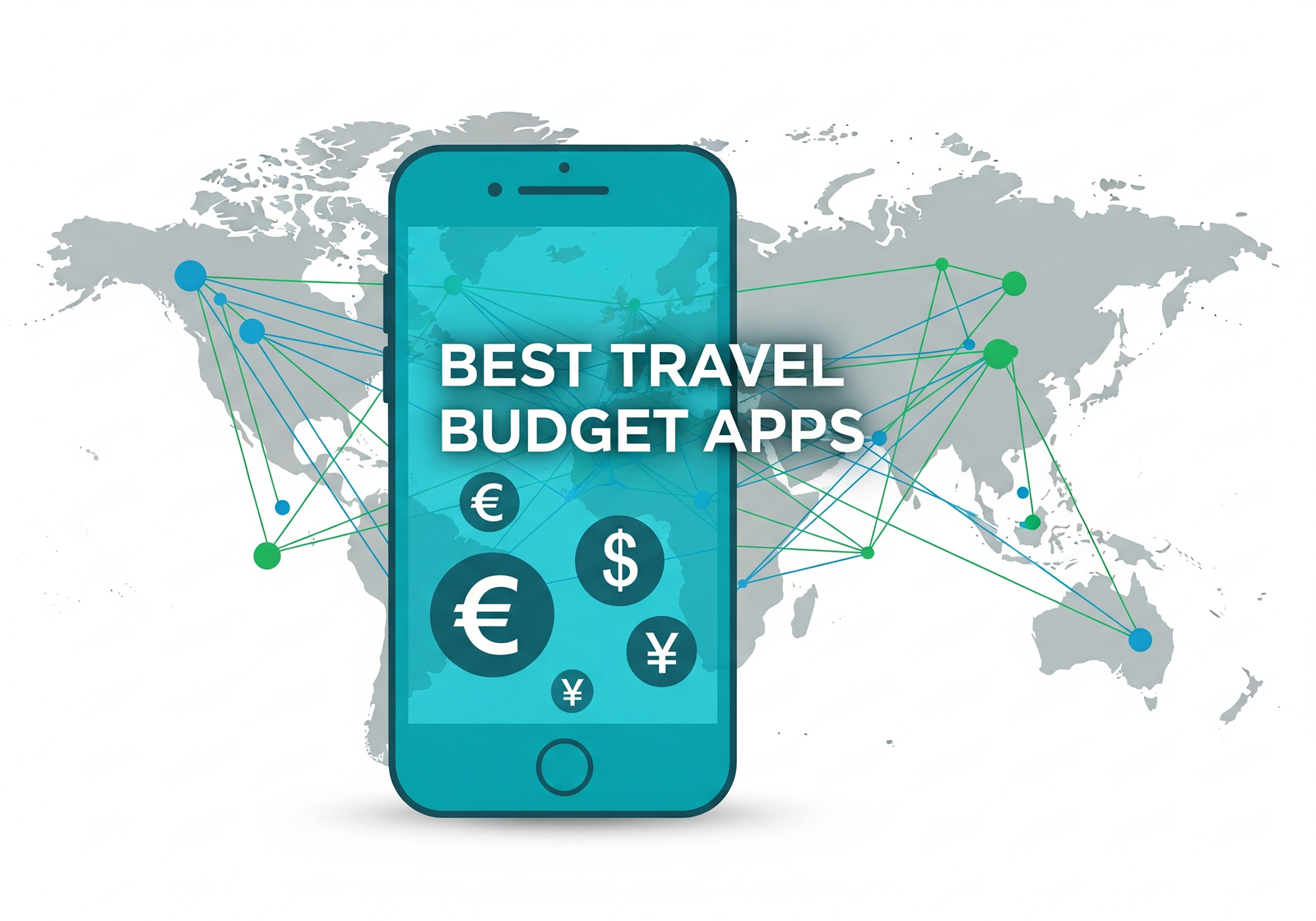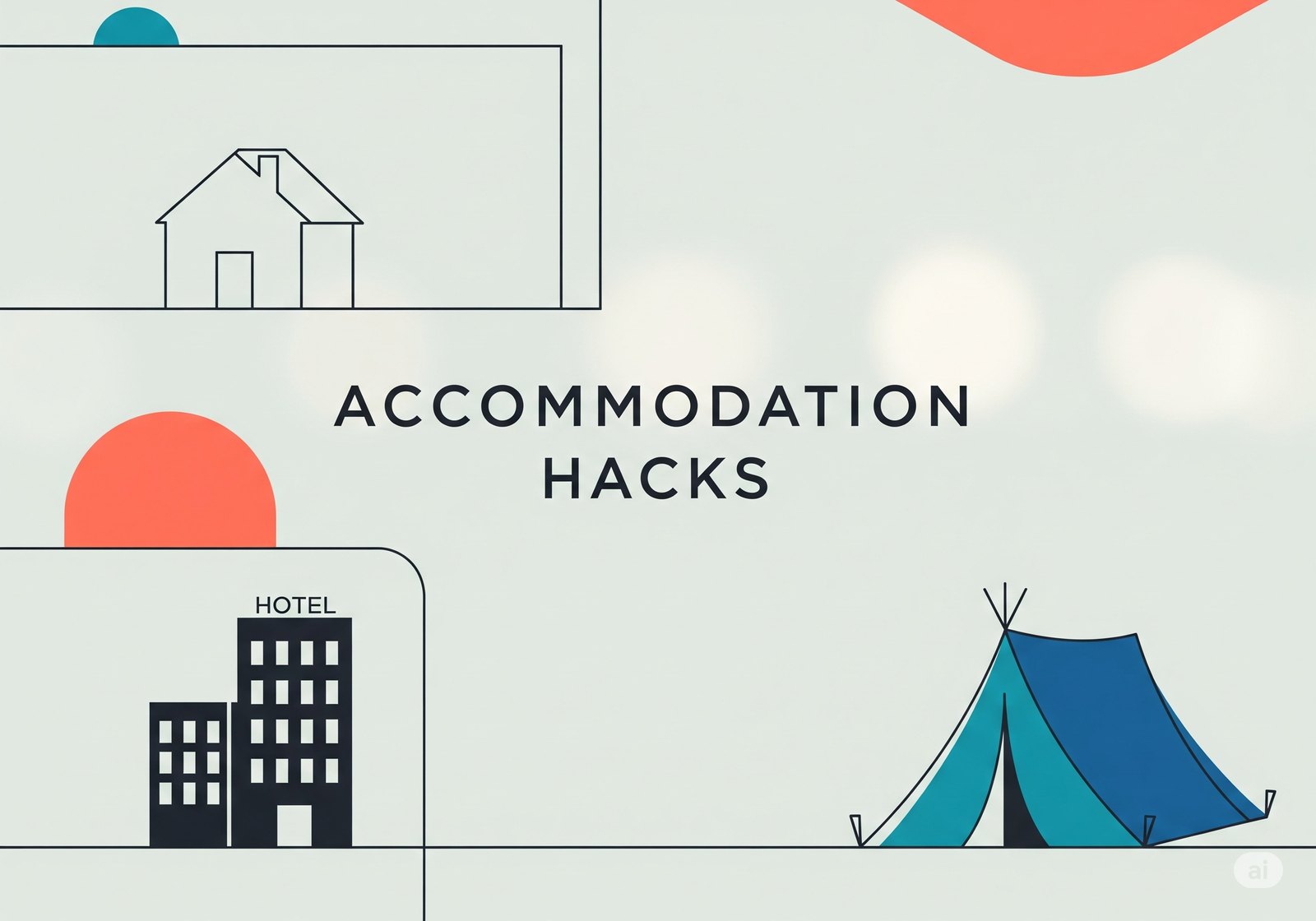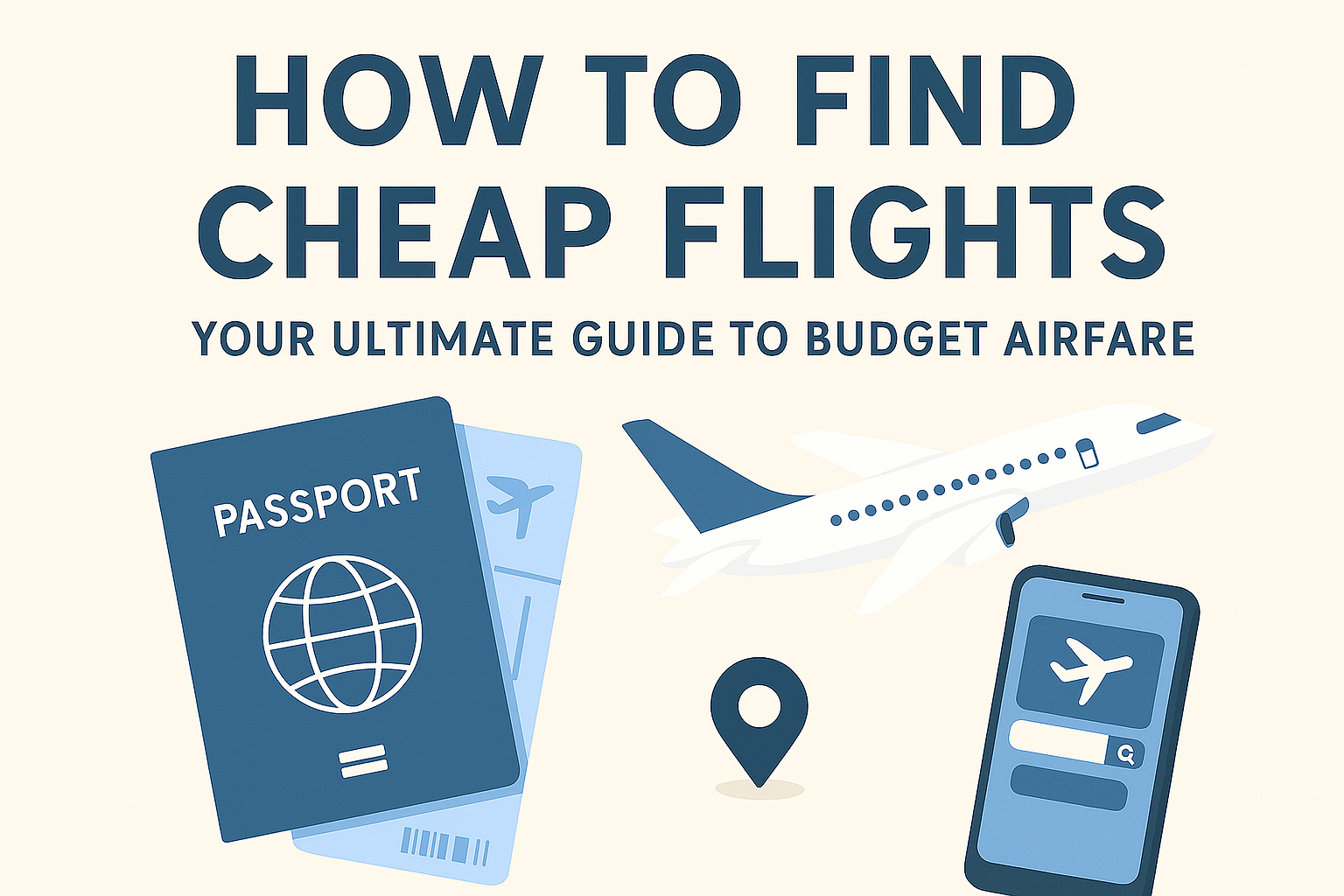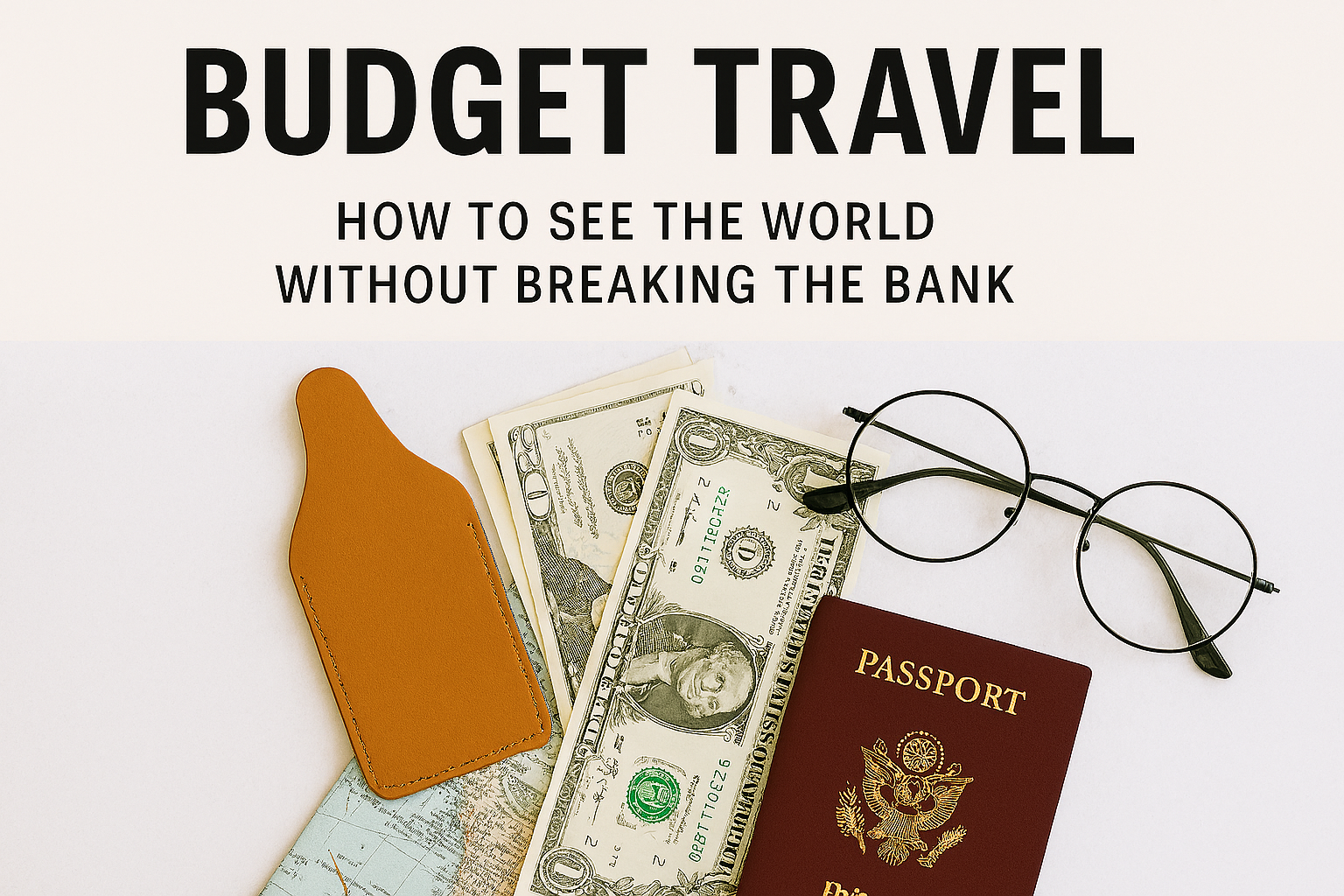Planning a trip isn’t just about booking flights and choosing destination. It starts long before takeoff, with saving money, building a travel fund and organizing everything so you can leave home stress-free. I’ve learned over the years that the best adventures begin with a solid plan and a few smart savings hacks.
Whether you’re preparing for a weekend getaway or a year-long backpacking trip, this guide will walk you through everything you need to know about pre-trip budgeting, saving, and smart travel planning.
💰 Step 1: Start Saving for Your Trip Early
The earlier you start, the easier it is. Instead of panicking two weeks before departure, create a dedicated travel savings plan months in advance. Break down how much you’ll need (flights, lodging, food, insurance, etc.), then set weekly or monthly savings goals.
🧳 Malik’s Experience: For my first trip to Southeast Asia, I opened a separate savings account labeled “Thailand Dreams.” Watching it grow over time kept me motivated and focused. I used automatic transfers—$50 a week added up to over $1,000 in five months, with zero stress.
🏦 Step 2: Use Budgeting Tools and Apps
Gone are the days of complicated spreadsheets. Apps like YNAB (You Need a Budget), Revolut, Monzo, and Plum help you automate savings and track your travel spending categories. These tools let you allocate funds for flights, hotels, activities, and even emergency expenses.
Pro Tip: Use a debit card with no foreign transaction fees and link it to your budgeting app. It’ll help you stay in control of your spending while abroad.
You can check our following article about this topic Best Travel Budget Apps: Manage Your Money on the Go
✈️ Step 3: Score Flight and Hotel Deals Early
Flights and accommodation are often your biggest expenses—but if you plan ahead, you can snag them at a fraction of the cost.
- Book flights 2–6 months in advance.
- Use Google Flights, Skyscanner, and Momondo for price comparisons.
- Set up price alerts to monitor fare drops.
🧳 My Hack: I planned a trip to Lisbon three months out and set Google Flights alerts. Two weeks later, I booked a round-trip ticket for $315—nearly $200 cheaper than the average price.
🗓️ Step 4: Create a Flexible Travel Itinerary
While spontaneity is fun, having a flexible itinerary keeps your trip organized and budget-conscious. Map out key cities, activities, and backup options. This helps you allocate funds more effectively and avoid last-minute overspending.
- Use Google Maps to pin important places.
- Save offline maps and booking details to your phone.
- Plan activities around free or low-cost days.
Real Talk: I once saved over $60 in Rome just by knowing that the Colosseum was free on the first Sunday of every month. A little research = big savings.
🧳 Step 5: Pack Smart to Avoid Extra Costs
Overpacking leads to overweight baggage fees and unnecessary headaches. Check your airline’s baggage policy and pack only what you need. Invest in lightweight luggage, compression cubes, and multi-use clothing.
Pre-trip packing checklist:
- Passport + printed copies
- Travel insurance documents
- Power bank + universal adapter
- Reusable water bottle
- Copies of bookings & itineraries
🧳 Malik’s Tip: My go-to move is laying everything out two days before I pack. It gives me time to reassess and cut 20% of what I don’t actually need.
🛡️ Step 6: Buy Travel Insurance
This isn’t the place to cut corners. Travel insurance protects you in case of cancellations, illness, theft, or emergencies. Compare policies using sites like SafetyWing, World Nomads, or InsureMyTrip.
Personal Story: I once broke a tooth while hiking in Ecuador. The emergency dental bill was over $400, but my travel insurance reimbursed it in full. That $40 insurance plan paid off 10x.
📄 Step 7: Prepare Travel Documents and Visas
One of the most overlooked (and stressful) parts of travel planning is dealing with passports, visas, and travel documents. Check visa requirements for your destination well in advance, especially if you’re visiting multiple countries.
- Make digital and physical copies of all key documents.
- Renew your passport at least 6 months before it expires.
- Upload important docs to a cloud service (Google Drive, Dropbox, etc.).
🧳 Lesson Learned: I nearly missed a trip to Vietnam because I didn’t realize I needed an e-visa. Since then, I check every country’s requirements as soon as I book the flight.
🧠 Step 8: Mental Prep—Plan, But Leave Room for Magic
Planning isn’t just about logistics, it’s also about mindset. Prepare for unexpected detours, delays, and surprises. Travel rarely goes exactly as planned, and that’s often the beauty of it.
Reflection: I once lost my wallet in Mexico City. A local helped me call my bank, brought me to a police station, and even gave me a meal. That unplanned moment ended up being one of the most human, humbling travel memories I’ve ever had.
✅ Final Pre-Trip Checklist
- Flights and accommodation booked
- Budget organized with buffer funds
- Travel insurance secured
- Visas and passport verified
- Packing list completed
- Offline maps and bookings downloaded
- Emergency contact list prepared
🌍 Final Thoughts: Pre-Trip Planning Sets You Free
Smart pre-trip planning doesn’t mean micromanaging—it means giving yourself the freedom to fully enjoy the journey. By setting a savings goal, organizing your documents, booking strategically, and managing your expectations, you’ll travel with confidence, clarity, and fewer last-minute headaches.
✈️ “When you plan intentionally, you travel effortlessly.” – Malik Thompson
Now, you’re not just ready to go—you’re ready to thrive wherever the road leads.
Suggested Readings
The Ultimate Guide to Budget Travel: How to See the World Without Breaking the Bank
Accommodation Hacks for Budget Travelers: Save Big on Stays
How to Find Cheap Flights: Your Ultimate Guide to Budget Airfare
Best Travel Budget Apps: Manage Your Money on the Go










Leave a Reply